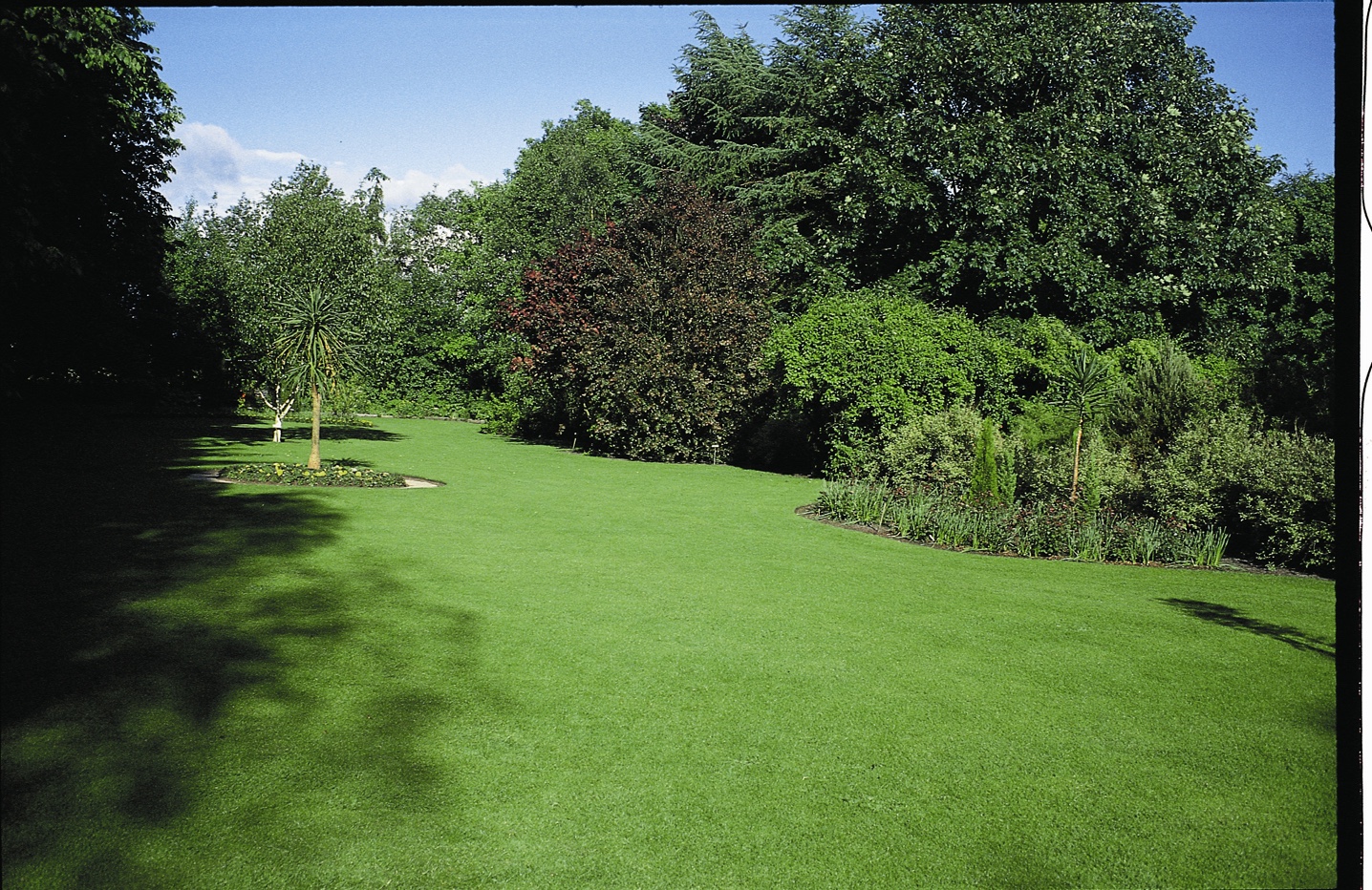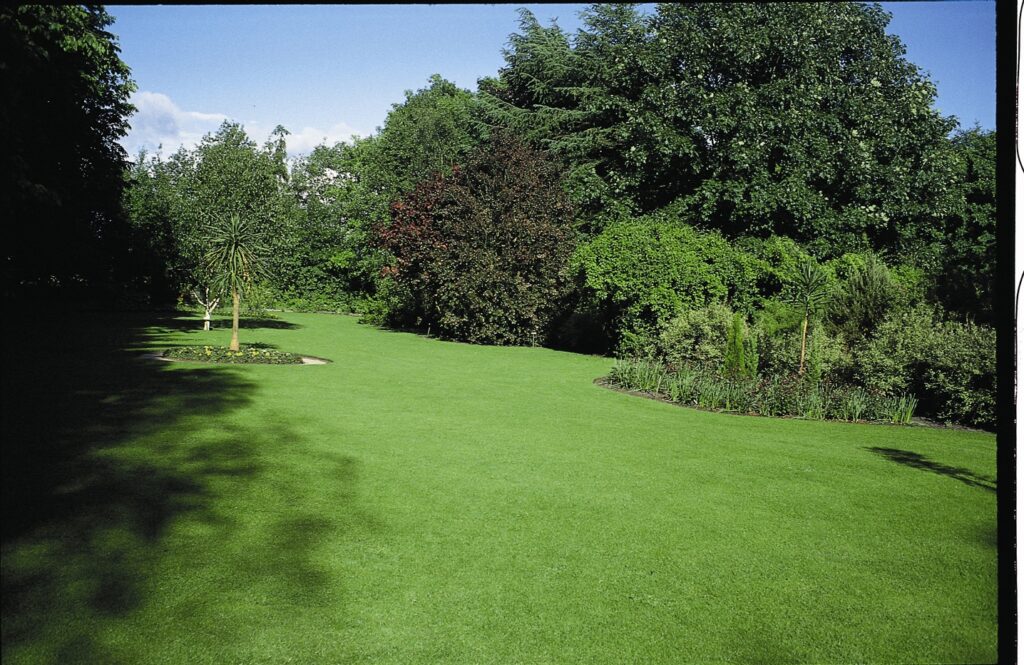 After a long winter, there is no better time for breathing new life into tired turf, or for sowing a brand-new lawn, than spring. Warmer weather means the buzz of lawnmowers, one of the key sounds of summer, the smell of newly cut grass, and a lush green lawn for you and your household to enjoy.
After a long winter, there is no better time for breathing new life into tired turf, or for sowing a brand-new lawn, than spring. Warmer weather means the buzz of lawnmowers, one of the key sounds of summer, the smell of newly cut grass, and a lush green lawn for you and your household to enjoy.
But how do you achieve the holy grail of a dream lawn? The coming weeks are the best time to prepare for the perfect green oasis that you have envisioned. Throughout March and April, the soil starts to warm up along with the temperature allowing grass seed to germinate quickly and establish so your lawn will become a focal point of your garden, providing space for children to play, pets to enjoy, and for the family to sunbathe, relax and entertain over summer.
Guy Johnson, of Johnsons Lawn Seed, has put together an action plan to help gardeners transform their turf for the lawn of their dreams and make your neighbours green with envy.
- Mowing your lawn
Growth will begin in spring, and this is when your regular mowing routine should start. The recommended cutting height on a mower is one to two inches to achieve the perfect cut. By cutting at the right height, the lower grass leaves can then develop into thicker and stronger plants, providing even coverage and the lawn of your dreams.
One way to combat this is by properly maintaining your equipment, especially by cutting your lawn with sharp blades on your mower. This can create severe stress on the lawn and will scalp the grass and leave patchy gaps, creating the perfect environment for weeds to grow and flourish. Also, it is important to keep the underside of your mower clean. Grass clippings can build up, cutting down on the efficiency of the mower which you do not want in peak outdoor entertainment season!
- Scarify your lawn
Look down after mowing and you will discover lots of thatch – that’s dead moss, old grass stems, and debris. Scarifying, the process of pulling out dead material is vital before overseeding to thicken your lawn. Vigorous raking using a spring-tined rake will take care of small lawns, but for medium or large expanses of turf, a powered scarifier is vital. You will be amazed at the amount of thatch these machines pull out, and it can all be easily composted.
3 Aerate compacted areas
We all have areas of the lawn that are heavily trodden in summer and can look tatty late in the season – grass close to patios and barbecue areas is a prime example. Aerating is a fancy word for spiking a lawn, allowing air, water, and nutrients to penetrate deep into the root zone. It loosens the soil and promotes hearty roots to grow deeply which produces a stronger lawn and assists with drainage during wet spells.
Small lawns can be deeply spiked with a garden fork every 15cm (6in) apart, but if you garden on clay soil that is prone to waterlogging, use a hollow tine aerator every few years. Holes left by this handy machine should be filled with top-dressing (a mix of loam, sand, and organic matter, available at garden centres), which encourages better rooting and thicker turf.
- Choose your dream lawn
Before overseeding, or sowing a new lawn, consider what your garden is used for – and what type of lawn would suit your needs best. If hard-wearing grass for the kids to play on is a top priority, choose Tuffgrass from Johnsons Lawn Seed. If your goal is a deluxe lawn that will be your pride and joy, Luxury Lawn will provide a beautiful finish. For lawns cast into the shade by trees and buildings, Shady Place lawn seed creates a dense coverage.
If you have lumps and bumps on your lawn, topdressing in spring will help to keep the surface level and your grass nice and healthy.
- Overseed and banish patches
If your lawn is looking sparse, and bare patches are evident after scarifying or removing weeds, unsightly areas can easily be tackled. To treat patches, use a garden fork to break the surface and rake the soil until it is fine and even. Sow fast-germinating Quick Lawn and lightly rake it into the soil surface, then water gently. You can use Quick Lawn to overseed the entire lawn, taking care to distribute the seed evenly across the area.
If your patches have been caused by your canine friends, Tuffgrass contains dog patch-resistant fine-leaved dwarf Perennial Ryegrass which is resistant to dog urine and will prevent scorch patches in the future.
- Sow new lawns
Spring months of April and May when it is neither too hot nor too cold, are perfect months for starting new lawns from scratch. Preparing a good seed bed in your lawn is the key to
success. Remove any debris and apply weedkiller or hand weed. A couple of weeks later, dig the site over, removing the roots of any perennial weeds. Rake the seed bed to a fine tilth, then leave for a fortnight. Once any further weeds have been removed, you can sow, rake in the seed, gently tread the area over to firm the seed in, then water.
In good conditions, grass will start emerging in a week, with the lawn established in six to eight weeks.
Find out more
Whether you want fast-growing grass seed, a luxury lawn, a hard-wearing lawn for children and pets or a lawn that will grow in the shade, Johnsons Lawn Seed can help grow the lawn that suits your needs. To see the different range of seed mixes, please visit the website at:
http://www.johnsonslawnseed.com/product-range.aspx
ENDS
Words: 950
For more information, interviews, or images please contact:
Kimberley Hornby Tel: 07851 610573 Email: kimberley@hornbywhitefootpr.co.uk
Cassie King Tel: 07875 337290 Email: cassie@hornbywhitefootpr.co.uk
Notes for editors:
Established in 1820, Johnsons Lawn Seed is the oldest lawn seed brand in the UK with a long and prestigious record of product innovation and grass breeding. DLF – Johnsons Lawn Seed’s parent company – dedicates a huge part of its business to research and development. All products have been developed as part of a 15-year breeding and R&D programme. As a result, gardeners can rest assured that every single seed that fills its boxes has been carefully researched, evolved, and selected to create the perfect lawn.

